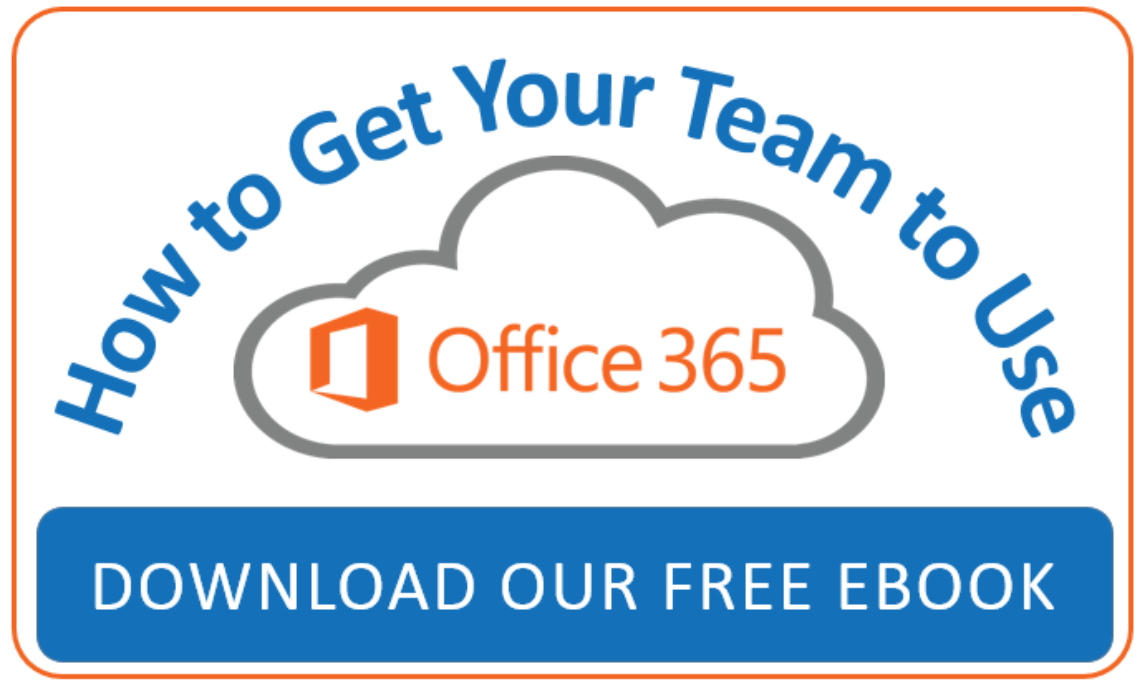The Importance of End User Training for SharePoint Optimization
We know that SharePoint offers a ton of amazing features, but here's the thing: its real value lies in the hands of your end users. Without proper training, they might struggle to navigate the platform efficiently, which can lead to decreased productivity and underutilization of its powerful tools. That's why SharePoint training is crucial for optimizing user adoption, and we're here to tell you why:
Increased User Proficiency
Proper training equips users with the necessary skills to confidently navigate SharePoint, utilize its features, and perform tasks efficiently, resulting in improved proficiency and productivity.
Increased proficiency in SharePoint is vital for upper-level management at organizations. When we talk about proficiency we are referring to users' knowledge, skills, and confidence in navigating and utilizing SharePoint effectively. It plays a significant role in boosting productivity, enhancing teamwork, reducing support costs, managing change, maximizing ROI, and ensuring data security.
Proficient users accomplish tasks efficiently, collaborate seamlessly, and adapt to process improvements, which allows them to unlock the full potential of SharePoint's advanced features.
By investing in comprehensive training programs and providing clear pathways for learning, organizations can empower their employees, increase user satisfaction, and achieve long-term organizational success with SharePoint.
Related Blog: Comprehensive SharePoint Training Guide: Everything You Need to Know
Enhanced Collaboration
SharePoint training helps foster a collaborative mindset, enabling users to create, share, and collaborate on documents and projects effectively, improving teamwork and overall work efficiencies.
Leveraging SharePoint's collaborative features to share knowledge, work together on projects, and drive seamless teamwork regardless of their location are a few of the many major benefits. This improved collaboration leads to increased productivity, better/faster outcomes, and the ability to tackle complex strategic initiatives.
After training end users they will know how to utilize common SharePoint collaboration tools, such as document co-authoring, version control, and real-time updates, enabling effective teamwork and fostering collaborative work culture throughout your organization.
Actively supporting SharePoint training and promoting enhanced collaboration helps organizations unlock the full potential of their teams while also driving success in their SharePoint rollout and implementation.

Efficient Document Management
With proper training, users can leverage SharePoint's robust document management capabilities, such as versioning, check-in/check-out, metadata, and document libraries, to organize and access information seamlessly.
With trained users who understand SharePoint's document management capabilities, organizations can streamline workflows, improve productivity, and ensure compliance. Additionally, efficient document management allows for centralized storage, easy retrieval, version control, and secure access to important documents.
Efficient document management in SharePoint empowers upper-level management with a comprehensive view of the organization's information, facilitates informed decision-making, and enhances synergies and productivity. With streamlined processes, reduced search time, and secure access to documents, upper-level management can focus on strategic initiatives, drive organizational growth, and ensure compliance with regulatory requirements.
Emphasizing efficient document management during the SharePoint training process will help organizations optimize their document-centric processes, mitigate risks, and improve overall operational efficiency. This, in turn, enables upper-level management to make informed decisions, drive strategic initiatives, and achieve top-level business objectives.
Streamlined Workflows
SharePoint training enables end users to design and automate workflows using tools like SharePoint Designer and Power Automate, streamlining business processes and reducing their overall manual efforts.
Streamlined workflows are of utmost importance for upper-level management in organizations utilizing or planning to implement SharePoint. With proficient users who understand how to design and automate workflows using SharePoint Designer and Power Automate, organizations can optimize their business processes, increase efficiencies, and reduce the manual efforts of their staff.
Upper-level management reaps the benefits of enhanced process visibility, increased productivity, and the ability to identify and address bottlenecks or areas that can be further optimized.
Top Five Benefits of Microsoft Office 365 SharePoint and OneDrive
Streamlined workflows are important because they foster seamless collaboration, improve task management, expedite decision-making, enhance process visibility, increase productivity, and enable the identification and addressing of bottlenecks. By promoting best practices in workflow design and automation, organizations can unlock these benefits, optimize their processes, and gain a competitive edge in today's fast-paced business environment.
Effective Search and Discovery
SharePoint's search capabilities make it easier to find relevant documents, information, and resources quickly, thereby saving time and effort.
When users are proficient in leveraging SharePoint's search functionalities, organizations can significantly enhance productivity, efficiency, and decision-making processes. Enabling users to quickly locate relevant information, documents, and resources, effective search and discovery capabilities reduce time spent searching for information and improve overall knowledge management.
This is particularly important for upper-level management as it assists them with making well-informed decisions based on readily accessible and up-to-date information. It also enables efficient coordination among teams, as users can easily discover and share relevant documents and insights. Gone are the days of multiple versions of the same document!
Key Features of SharePoint with Microsoft 365
SharePoint, integrated with Microsoft 365, offers a plethora of features that enhance collaboration, information management, and productivity. Some of the most notable include:
SharePoint Sites
Create sites to organize content, facilitate teamwork, and share information across teams or departments.
SharePoint Sites in Microsoft 365 offer flexible collaborative workspaces for teams to store, share, and organize information. They also enable customized teams, communication, and hub sites, which helps to increase cohesion across teams throughout organizations.
SharePoint Sites offer strong document management, integration with other Microsoft tools, and advanced security controls, allowing users to streamline teamwork, enhance productivity, and optimize business processes.

Document Libraries
Store, manage, and collaborate on files in a centralized location, ensuring version control, security, and easy access.
Document Libraries are a key feature of SharePoint with Microsoft 365, offering powerful document management capabilities. They provide a centralized hub for storing, organizing, and collaborating on files. With features like metadata, version control, and co-authoring, document libraries simplify collaboration, improve document organization, and enhance productivity.
Related: How Do I Change This New SharePoint Document Library View?
Lists
Build custom lists to track tasks, issues, contacts, or any other type of structured data, simplifying business processes.
Lists are a fundamental feature of SharePoint with Microsoft 365, offering powerful data organization and management capabilities. They allow you to create custom lists to track information, tasks, contacts, or any other data relevant to your organization. With features like customizable views, sorting, filtering, and the ability to create workflows, Lists empower teams to optimize processes and improve coordination.
By leveraging the flexibility and functionality of SharePoint lists, your organization can efficiently manage and track data, enhance team productivity, and drive better decision-making.
Read more: Mastering SharePoint Lists: A Training Guide
Document Management
Leverage features like metadata, content types, and retention policies to organize and manage documents effectively.
With features like version control, metadata, and search capabilities, SharePoint enables efficient document tracking, easy retrieval, and enhanced collaboration. By leveraging SharePoint's document management capabilities, your organization can refine workflows, improve productivity, and ensure compliance.
With proper training and utilization of SharePoint's document management features, you can optimize document-centric processes, foster teamwork, and drive operational excellence in your organization.
Workflows
Automate business processes by creating workflows with SharePoint Designer or Power Automate, improving efficiency and reducing manual effort.
By defining a series of steps and actions, workflows enable organizations to automate tasks, route documents for approval, and trigger notifications. SharePoint offers both out-of-the-box workflows and the ability to create custom workflows using SharePoint Designer or Power Automate. With workflows, you can reduce manual effort, improve synergies, and ensure consistent processes.
By harnessing the capabilities of SharePoint workflows, your organization can enhance productivity, optimize operations, and drive efficiency throughout various business processes.
Learn more: Automatically Send Responses to a SharePoint List Using Power Automate
Integration with Microsoft Teams
Seamlessly connect SharePoint with Teams to enhance collaboration, share files, and access SharePoint content within Teams channels.
With a Microsoft Teams integration, you can easily access SharePoint documents and content directly within Teams channels, chats, or meetings. It promotes a unified digital workplace experience, allowing teams to collaborate on files, co-author documents, and access important information without switching between applications.
Leveraging the integration between SharePoint and Teams allows your organization to foster effective teamwork, consolidate communication, and improve productivity across projects and departments - a "win-win" scenario.

Mobile App
Accessing SharePoint on the go enables users to stay connected, access documents, and collaborate from any device they choose.
With the SharePoint mobile app, your team can stay connected, collaborate on documents, and access important information from anywhere, at any time, using their smartphones or tablets. The app provides a user-friendly interface, allowing users to browse sites, view and edit documents, participate in discussions, and receive notifications.
The SharePoint mobile app plays a crucial role in boosting productivity, facilitating remote collaboration, and providing your team with immediate access to vital information, regardless of their location.
SharePoint Training "Pathways to Learning"
When implementing a SharePoint training plan, it is crucial to provide users with clear and structured guidance on their learning journey. "Pathway to Learning" documents serve as roadmaps, outlining training modules, resources, and milestones required to achieve proficiency with SharePoint training. Some essential aspects of a great "Pathway to Learning" include:
Clear Learning Roadmap
Pathway documents play a critical role in SharePoint training, offering a clear learning roadmap for users. These documents provide a structured approach, guiding users through different training modules and ensuring comprehensive coverage of SharePoint features and functionality. By following the pathway, users can systematically learn and master SharePoint, maximizing their proficiency and productivity.
Pathway documents act as a reliable resource, helping organizations streamline their training efforts and ensure a consistent learning experience for all users. With a well-defined learning pathway, organizations can empower their teams with the knowledge and skills needed to fully leverage SharePoint's capabilities.
Consistent Training Experience
A consistent training experience is vital in SharePoint implementation. A defined learning pathway ensures that all users receive standardized training, equipping them with the skills and knowledge needed to effectively utilize SharePoint. By providing consistent training, organizations promote a common understanding of SharePoint's functionalities, enabling seamless collaboration and maximizing productivity.
SharePoint Training for Beginners: Key Concepts and Fundamentals
A cohesive training approach fosters a shared language and best practices across the organization, enhancing user adoption and optimizing SharePoint's benefits. With consistent training experiences, organizations can drive successful SharePoint implementation and empower their workforce to achieve their full potential.
Measurable Progress
Pathway documents provide the means to track and measure user progress in SharePoint training. By utilizing these documents, organizations can identify areas where users may need additional support or advanced training. Tracking progress allows for targeted interventions, ensuring users receive the necessary guidance to overcome challenges and improve their skills.
Measuring progress also helps evaluate the effectiveness of the training program and make informed decisions regarding future training initiatives. With pathway documents, organizations can assess user proficiency, address knowledge gaps, and continuously enhance SharePoint adoption, resulting in increased productivity and success in leveraging SharePoint's capabilities.

Reference and Support
Users can refer back to the pathway documents as ongoing resources, reinforcing their learning and helping troubleshoot issues or explore advanced features.
Pathway documents serve as valuable references and ongoing support resources for users. Even after completing initial training, users can refer back to these documents to reinforce their learning and refresh their knowledge. The pathway documents provide a comprehensive overview of SharePoint features, allowing users to troubleshoot issues independently and explore advanced functionalities.
By having access to these resources, users can confidently navigate SharePoint, seek answers to their questions, and unlock the full potential of the platform. This availability of reference and support materials promotes self-sufficiency and encourages users to overcome challenges, ensuring a smooth and productive SharePoint experience throughout the organization.
Change Management
Change management is a critical aspect of SharePoint training, and pathway documents play a key role in facilitating this process. These documents provide users with a clear understanding of the benefits and expected outcomes of SharePoint training. By outlining the advantages and addressing any concerns or resistance, pathway documents help manage the transition effectively. They serve as a communication tool, aligning stakeholders and users on the purpose and value of SharePoint training.
This clear understanding enhances user buy-in, reduces resistance, and fosters a positive mindset toward change. With pathway documents, organizations can navigate the change process smoothly, ensuring successful adoption and maximizing the return on investment in SharePoint training.
To Conclude...
Alright, here's the deal: training your end users is super important if you want to make the most out of SharePoint. It's all about giving them the skills they need to navigate the platform like pros and use all its cool features effectively. When your users are trained, they become more proficient, collaborate better, manage documents like champs, automate workflows, and find stuff with ease. And hey, integrating SharePoint with Microsoft 365 brings even more awesome features to the table!
To make it a success, you need a clear plan. Give your users a roadmap that shows them the way to SharePoint mastery. Keep the training experience consistent and track their progress along the way. And don't forget to provide them with handy reference materials they can turn to whenever they need a little help. Change management is important too, so make sure everyone understands the benefits and gets on board!
Remember, SharePoint training is all about empowering your team, boosting collaboration, and making your organization more efficient. Stay tuned to our blog for loads of tips, insights, and step-by-step tutorials on SharePoint training. We've got your back!
To read more about SharePoint training, check out our related blog posts:
- "A Comprehensive Guide to SharePoint Training: Everything You Need to Know"
- "Getting Started with SharePoint Training: A Step-by-Step Tutorial"
- "SharePoint Training for Beginners: Key Concepts and Fundamentals"
- "Mastering SharePoint Lists: A Training Guide"
- "Mastering SharePoint Document Libraries: A Training Guide"
- "Boosting Collaboration with SharePoint Training: Tips and Best Practices"
- "Effective Document Management with SharePoint: Training Strategies"
- "SharePoint Training for Site Administrators: Essential Skills and Techniques"
- "Navigating SharePoint Permissions: Training for Proper Access Control"
- "SharePoint Workflows: Simplify Business Processes with Training"
- "Improving Search and Discovery in SharePoint: Training Tips"
- "Exploring SharePoint Online: Training for Cloud-Based Collaboration"
- "SharePoint Mobile App: Training for Productivity on the Go"
- "SharePoint Governance Best Practices: Training and Implementation"
- "Maximizing Team Productivity with SharePoint: Training for Project Management"
- "Using SharePoint for Business Intelligence: Training for Data Analysis"
- "SharePoint Integration with Microsoft Teams: Training for Seamless Collaboration"
- "Customizing SharePoint Sites: Training for Design and Branding"
- "SharePoint Security Essentials: Training for Safeguarding Your Data"
- "SharePoint Migration Strategies: Training for Smooth Transitions"
- "Advanced SharePoint Development: Training for Power Users and Developers"
- "Automatically Send Responses to a SharePoint List Using Power Automate"
- "Connect a Form to a SharePoint List with Microsoft Flow in 3 Steps"
- "Top Five Benefits of Microsoft Office 365 SharePoint and OneDrive"
- "Is Your Team Resisting? Office 365 SharePoint Training Is the Answer"
- "How to Organize your SharePoint Team Site for Optimal Results"




